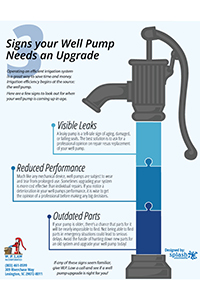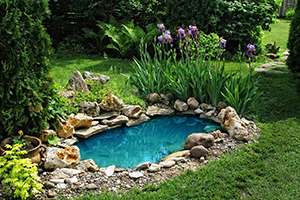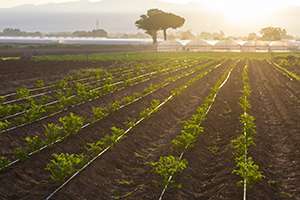
Click Here for larger image.
Whether you use your well for intensive irrigation, industrial piping, or simple residential fountains, a consistent and affordable water supply is essential. If your well relies on outdated pumping technology, however, none of these devices will work to their full potential. To know whether it’s time to upgrade your pump, look out for:
1. Electrical Excess
Obsolete pumps use more energy to move the same amount of water as modern ones. If you notice an unusually high electric bill, your well may be to blame. Replacing the pump with modern model will improve efficiency, paying for itself through lower electrical bills.
2. Sisyphean Service
In addition to wasting energy, obsolete pumps break more often and require more extensive service to fix. If you are constantly spending money and time on your well, consider cutting your loses and replacing it. Newer models can work for up to twenty years before needing repairs, thus reducing your long-term maintenance costs.
3. Pressure Problems
Traditional pumps struggle to deliver water at the same pressure throughout the system, especially if you use multiple water sources at once. Modern pumps, however, can do this without skipping a beat. If you find that pressure varies during the day or with more intensive water use, you could use a pump upgrade.
W. P. Law provides the latest pump technologies, as well as in-depth inspections, repairs, and other fluid services, to customers throughout South Carolina. For more information on improving the efficiency and longevity of your water system, visit our website today.















